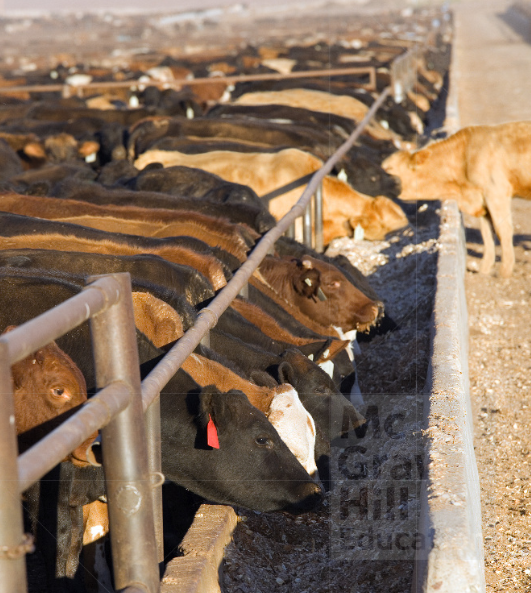New regulations by the U.S. Food and Drug Administration (FDA) that went into effect on January 1, 2017, banned the use of antibiotics as feed supplements to help livestock and poultry grow faster. The new rules, prohibiting the over-the-counter sale to farmers of medically important antimicrobial drugs for humans, were enacted in an effort to stem the growing resistance of bacteria to antibiotics. See also: Antibiotic; Agricultural science (animal); Animal feeds; Antimicrobial resistance; Medical bacteriology; Public health; Rise of antibiotic resistance in bacteria

Farmers began adding small amounts of certain antibiotics to animal feeds early in the 1950s after they observed that livestock eating antibiotic supplements gained meaty weight more rapidly. How antibiotics promote growth is not fully understood, but researchers presume at least part of the weight gain is a consequence of the animals not needing to mount immunological assaults against minor bacterial infections throughout their lives. Such infections can be common under the crowded conditions of industrial livestock production. According to the FDA, by 2014 17,000 tons of antibiotics were sold in the United States for livestock. This figure represented 80 percent of all U.S antibiotics sales. In contrast, the European Union banned the use of antibiotic growth promoters in animal feed in 2006.
Whether the FDA rules will significantly cut the overuse of antibiotics remains to be seen, because U.S. farmers will still be allowed to request prescriptions from veterinarians for therapeutic uses. Nor is it certain that the rules change will have much effect on the global problem of antibiotic resistance because farmers in other countries with huge livestock production still routinely feed the drugs to their animals. Nevertheless, the FDA is working with farmers to promote immunization, clean water, and improved sanitation—that is, good farm hygiene—and some major commercial animal producers and the restaurant industry have committed to significantly reducing antibiotic use.





